The world’s first hybrid electric jet aircraft, drones that fit in the palm of your hand and driverless vehicles were just some of latest equipment with new technology put to the test on the Army Warfighting Experiment (AWE) 2023.
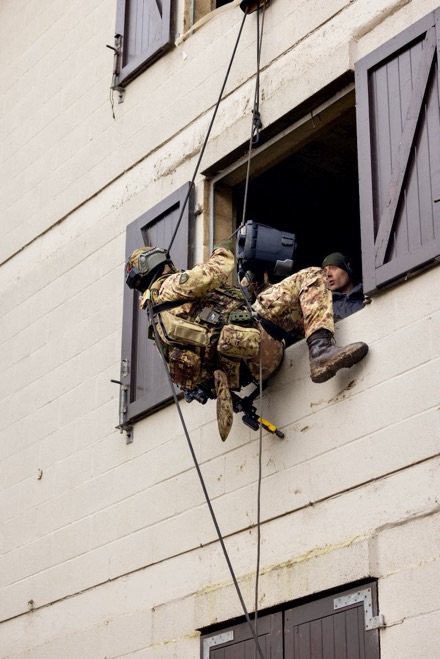
AWE has been the Army’s flagship innovation experimentation programme for the past six years, forging relationships with industry to identify technology that could be used in future warfare.
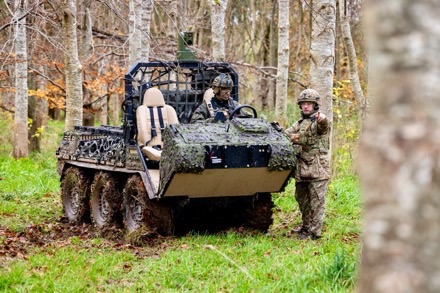
The focus of this year’s AWE was to identify current and emerging technologies that could provide solutions to the challenges faced by soldiers in urban warfare.
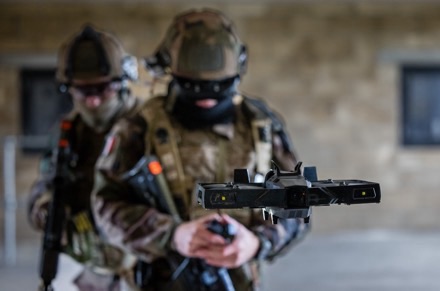
Over 40 systems from 35 suppliers; two thirds of which are from British industry, were tested and assessed by the Army’s Experimentation Battalion, 2nd Battalion The Royal Yorkshire Regiment, during four weeks of combat trials on Salisbury Plain.
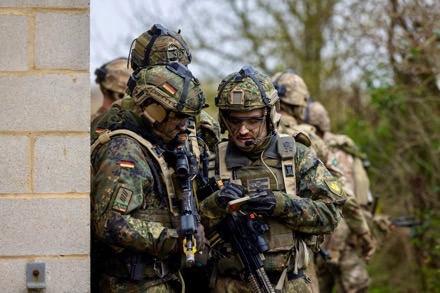
They were joined on the experiment by US, Dutch, French, German, Spanish and Italian troops, as well as observers from Canada, Australia, KSA and Turkey.
“We are looking towards the future battlespace and looking at lessons learned from countries like Ukraine. It’s important to learn the lessons from those conflicts and stay up-to-date and get ahead of the curve. This kit will help us do that or, at the very least, enable us to stay on par with a future enemy.”
PRIVATE DANIEL GONZALEZ
Among the products being tested was the Hydra 400 – the world’s first hybrid heavy lift drone, which is powered by eight electric motors and four jet engines with a maximum lift of 400kg. The jets take the weight of the cargo, and the rotors look after the navigation and flight symmetry.
The next generation drone can be assembled and ready for flight in six minutes and can carry the Brimstone missile that can engage a wide range of targets including fast moving vehicles and vessels at sea.

The results from the experiment will generate evidence to inform future investment decisions and drive the thinking on design and training decisions, ensuring the Army has the best solutions to meet the demands of modern warfare.
Private Daniel Gonzalez said: “We’ve been trialling everything from software to unmanned vehicles, and from ladders to an electric wheelbarrow that can be used to evacuate casualties or to carry kit.”
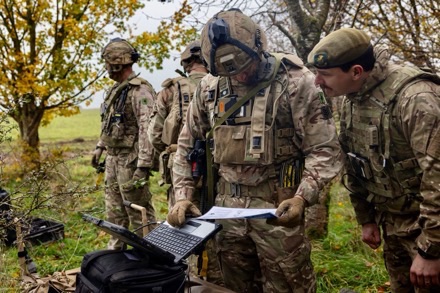
“You can see exactly where a lot of the kit slots into the battlespace. Some of the kit less so as it is still in development, and some is not fit for purpose.”
“We are looking towards the future battlespace and looking at lessons learned from countries like Ukraine. It’s important to learn the lessons from those conflicts and stay up-to-date and get ahead of the curve. This kit will help us do that or, at the very least, enable us to stay on par with a future enemy.”
“Our job role is incredibly exciting because we get to see the latest kit available first.”
The next generation of lightweight Uncrewed Aerial Systems (UAS) were tested, including the Black Hornet 4. Small enough to fly into buildings and with a flying time of more than 30-minutes, it can provide situational awareness without putting lives at risk.
Private Gonzalez said: “We can send the Black Hornet 4 and similar drones through an open window to look inside a building, find out its layout and see who’s in there. That info can then be used to aid troops’ entry and approach once inside. With this information the survivability of soldiers is increased.”
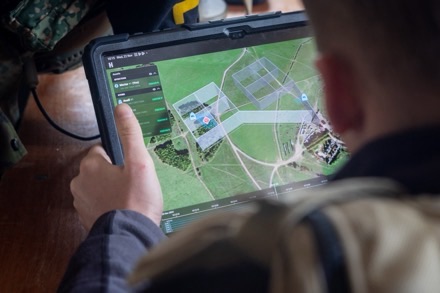
“On the AWE we feedback directly to the defence industry whether the product is easy to set up and use and how feasible it is to use in a real-life situation. On past exercises we have given feedback and seen the results, whether it’s a software update or even entirely new hardware and when we see that, it makes it really worth it.”
The soldiers were also testing new software that could be added to existing kit to improve performance. This included Instant Connect Enterprise (ICE) software that, when added to existing headphones and software, automatically translated the sender’s language into the language of the receiver. This enabled easier and quicker communication between British and international troops.
Private Matthew Perkins said: “The translation works with hardly any delay and network interference. The idea is there, and it does work. The main issue is the delay and in a battle a lot of things can happen. Given a few tweaks to make it smoother, I would use it.”
Watch the video here.
Colonel Toby Till, Commander of the UK’s Experimentation Trials Group said: “This is the third iteration in the AWE urban focused series, held in close collaboration with industry, and is designed to make the Army more lethal.
“The driving force is the Land Operating Concept. It can be likened to the North Star for the Army and demonstrates how we are going to fight differently in the future and the capabilities we will need to do so.”
“Our collaboration with industry on this event is key – we couldn’t do without them. We are seeing different industries collaborating who wouldn’t normally do so, and military advice being provided to both of them.”
The evidence from the AWE will inform the Army and Defence as to the capabilities which should receive investment in order that the Army may become more lethally effective and remain competitive on the global stage.
Story published by British Army
All photos MOD Crown Copyright

